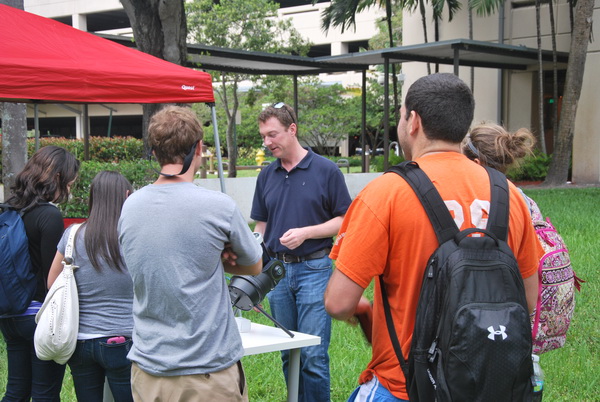To celebrate the vernal equinox on Mar. 20, otherwise known as the first day of spring, faculty members and students from the Farquhar College of Arts and Sciences conducted daytime astronomical observations at NSU.
Bryan Armentrout, Ph.D., and Stefan Kautsch, Ph.D., assistant professors in the college, led the interactive session, which the faculty deemed a lesson in “desert island astronomy.” By marking the sun’s shadow on the noted day, observers were able to determine local solar noon, the orientation of the celestial plane, magnetic declination, and even their own latitude.
The observations and collected data, when pooled with simultaneous measurements from other locations, will enable the student participants to calculate Earth’s circumference. This method of calculation mirrored that of Greek mathematician and astronomer Eratosthenes, from the Third Century B.C.
“It was an exciting opportunity for our students to repeat one of the great classical experiments in science, right here at NSU,” said Kautsch after the event.
The faculty members plan to lead another observation session for students, this time to celebrate the autumnal equinox—the first day of fall—on Wednesday, Sept. 22. For more information about the next equinox event, contact Bryan Armentrout, Ph.D., or Stefan Kautsch, Ph.D.
Visit the college’s Photo Gallery to view pictures from the vernal equinox observation.


